calsfoundation@cals.org
Lower White River Museum State Park
| Location: | Prairie County |
| Size: | 0.4 acres |
The Lower White River Museum State Park is located in Des Arc (Prairie County), which is in the northeast corner of the central part of the state. The museum tells the story of the White River, specifically the Lower White River, and its dramatic and important role in Arkansas history. As pioneers and early settlers migrated west, the White River served as a primary transportation route, and that river travel expanded the settlement and economic opportunities in the region.
The town of Des Arc, where the state park is located and which was the focus of the original museum, owes its very existence to the White River, as do many other old river towns that line its banks. Steamboats also played a major role in the white settlement of the area in the early nineteenth century. In addition to transportation, the river furnished both fish and mussels, which provided more ways to earn a living. Mussels provided not only food but shells for making buttons, which was an industry unto itself in the region during the late 1800s.
The earliest settler of record in the vicinity of Des Arc was Frenchman Francie Francure, who received a Spanish grant for land near the mouth of the Little Red River. In establishing the land’s title, he declared he had lived on it since 1789. Americans began to settle the area in the early 1800s. James Erwin and George Claiborne Watkins, considered the founders of Des Arc, platted the town in 1848. Incorporation came on December 28, 1854. By the beginning of the Civil War, almost 2,000 people lived in Des Arc, but by the time the war was over, the number had dropped to approximately 400. Most of the businesses and homes were destroyed by Union troops, and the city was abandoned. The lumber from the businesses and homes was used to build homes in DeValls Bluff.
After the war, Des Arc began to rebuild, with railroads replacing boats for shipping goods (Rock Island Railroad came to Des Arc in the early 1900s). The river was still popular for fishing, with commercial operations booming. Early settlers were more dependent on cattle and wild game than row crops, but by the 1850s, cotton had become important to the region, with rice and soybeans becoming commercially significant in the early 1900s. The timber industry, which had begun in the late 1800s, continued to flourish as the demand increased for crossties for the burgeoning railroad industry.
The Lower White River is no longer used as a major transportation route in transporting people, but the river is still used by barges to transport crops to market. Though the tools and methods of farming have changed, agriculture still plays an important role in the Lower White River area. Cotton, however, has been replaced in importance by soybeans and rice.
Originally, the Lower White River Museum was called the Des Arc Archeological Center Bethell Pioneer Museum when it was established in 1970. It was named for its benefactor John Bethell, a prominent local citizen whose personal collection started the museum. The exhibits dealt with the area’s 1800s rural lifestyle.
Legislative Act 561 of 1969 provided $25,000 for the 1970 fiscal year and $10,000 the following year to Arkansas State University–Beebe Branch in Beebe (White County) for “constructing, equipping and operating the museum.” The name was changed to the Des Arc Archeological Museum and remained that until 1975, when it was turned over to the Arkansas Department of Parks and Tourism. It became Prairie County Museum and was administered by the Arkansas History Commission (now called the Arkansas State Archives) from 1975 to 1979, when it was then transferred to the newly created Museum Services division of the parks and tourism department. The focus of the museum was widened to “interpret and preserve the history of all of Arkansas’s navigable rivers for 1831 to 1931,” from the point when European travelers began to settle in significant numbers along the White River to the end of the riverboat era. The exhibits of the Lower White River Museum State Park interpret the settlement and commerce along the White River and cover the areas of pearling/button making, hunting and fishing, timber, agriculture, medicine, education, the Civil War, and riverboats.
For additional information:
Arkansas State Parks–Lower White River Museum. http://www.arkansasstateparks.com/lowerwhiterivermuseum/ (accessed August 17, 2023).
Staff of the Arkansas Department of Parks and Tourism
 Button Display
Button Display 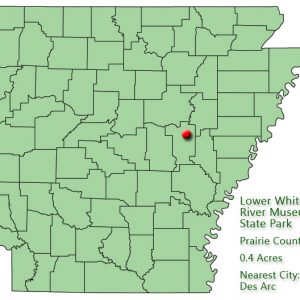 Lower White River Museum State Park: Park Location
Lower White River Museum State Park: Park Location 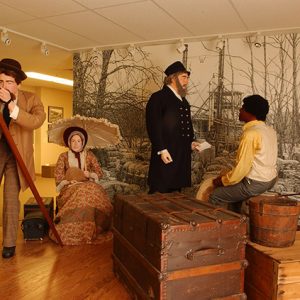 Lower White River Museum
Lower White River Museum 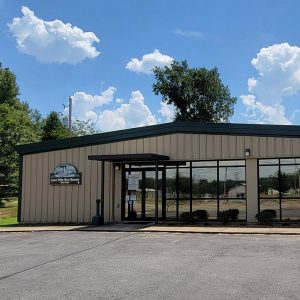 Lower White River Museum State Park
Lower White River Museum State Park 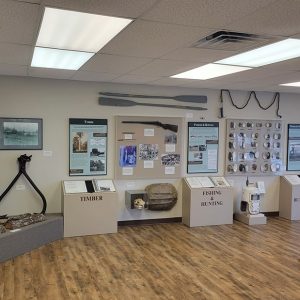 Lower White River Museum State Park Display
Lower White River Museum State Park Display 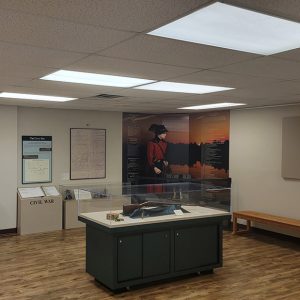 Lower White River Museum State Park Display
Lower White River Museum State Park Display 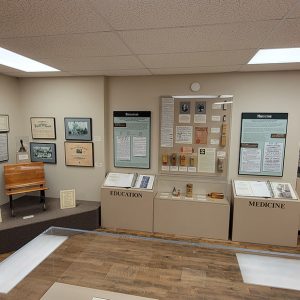 Lower White River Museum State Park Display
Lower White River Museum State Park Display 



Comments
No comments on this entry yet.